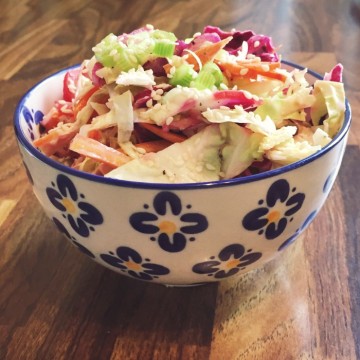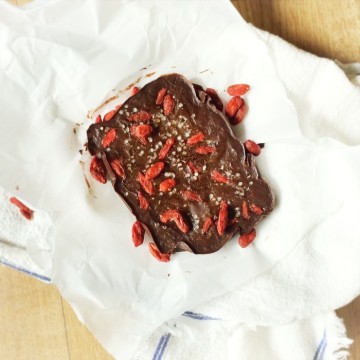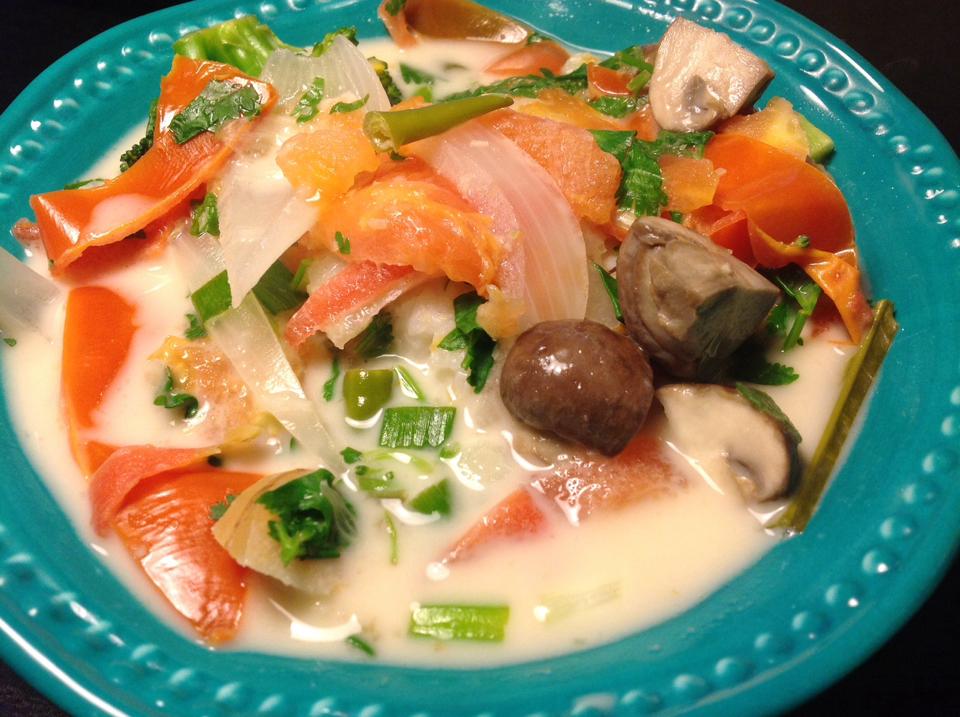The paleo vs. vegan debate is still going strong. For every green smoothie-chugging, yogi vegan, there’s a protein-pounding, Crossfitting carnivore. You can probably guess which side we’re biased towards here at PD!
But, despite paleo’s meat-centric ideology, there are actually some redeeming virtues to the diet. For one, it advocates unprocessed whole foods. It can also be a very healing diet for those with special nutritional needs. These two aspects can be incorporated into a fully plant-based diet, resulting in a paleo-vegan diet.
A paleo-vegan diet eliminates potatoes, grains and beans: the idea is that these foods are not ideal for human consumption as they need to be cooked for a long period of time, and often create fermentation in the gut.
Instead, a paleo-vegan diet would rely heavily on nuts/seeds, healthy oils, loads of veggies/greens, plus some low-sugar fruit.
Who, you may ask, is paleo-vegan good for? Here’s just a few examples of those who may benefit from the fusion:
-The person with candida overgrowth
Paleo eaters usually stick to low-sugar fruits as their only source of the sweet stuff. This means less sugar available for candida bacteria to feed on, which may slow or eliminate growth.
With no starchy foods in the diet, blood sugar remains balanced and the gut bacteria functions at its prime.
-The person struggling to maintain their weight
Proteins and fats tend to create greater satiety than carbs, so eat up. Paleo desserts like this one may be highly caloric, but they will curb your hunger longer than other treats.
No grains, beans or sugary fruits means less overall carbohydrate intake. When carbs are reduced, the body begins to burn fat stores for energy. This may also contribute to easy weight management.
-The person with hormonal imbalance
Healthy fats are necessary to produce hormones (especially estrogen) and keep them stable. They also facilitate nutrient absorption from the other foods that we eat.
Leptin, a hormone that controls hunger, can be disrupted by grain and sugar consumption, but can easily be reversed by avoiding these foods.
-The person with a sensitive digestive system
Grains, beans and potatoes are notoriously hard to digest. They contain phytates and lectin which can be toxic to some people’s bodies.
“Grain brain fog” is a common symptom for those with grain issues. The gut and brain are strongly linked, so when one is out of whack, the other follows.
In addition to what’s mentioned above, paleo-vegan superstars (i.e. veggies and healthy fats) contribute to a healthy complexion and steady energy.
If you think a paleo-vegan diet is right for you but don’t know where to start, check out the sample menu below for inspiration!
Breakfast: Smoothie with pear, greens, avocado, hemp protein & nut/seed milk
Snack: Berries and coconut yogurt, topped with flaxseed meal
Lunch: Vegan summer slaw and roasted asparagus soup
Snack: Veggies or paleo-vegan crackers and raw zucchini pesto hummus
Dinner: Spaghetti squash with marinara and steamed veggies
Dessert: Piece of sexy superfood chocolate bark or a date stuffed with coconut butter
*Since a vegan diet is already “restrictive,” adding paleo to the mix may not be best for everyone. Some may consider sticking to sprouted, gluten-free grains and legumes rather than eliminating them completely.
Would you try a paleo-vegan diet?
Related: 7 Delicious Nut-free Spreads You Should Try
What a Fruitarian Diet Looks Like (Food Journal)
Why I Went Gluten-Free Vegan–Benefits and Results
Photo: Matthew Hoelescher via Flickr; Samantha Matcovsky; Mary Hood








